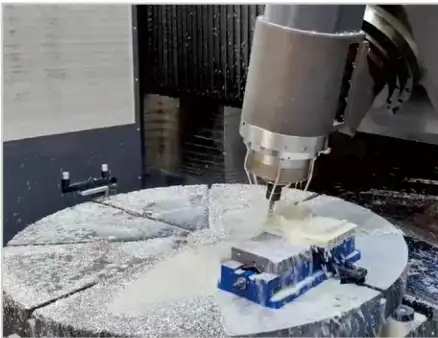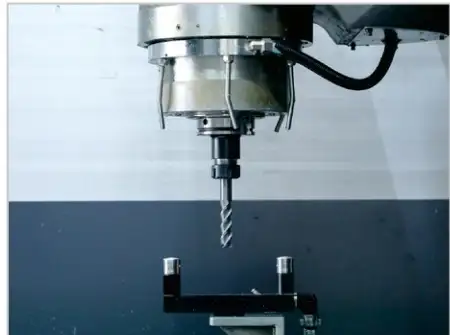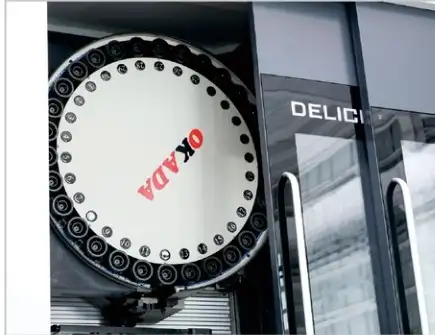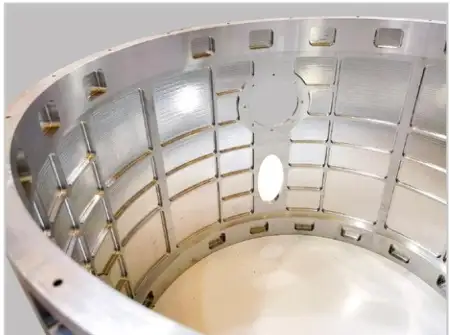What’s Five-Axis Machining

Hey, folks! Ever wonder how they make those mind-blowing parts for jets, medical gadgets, or your car’s engine? Let’s talk about five-axis machining—the rockstar of CNC (Computer Numerical Control) machining. It’s like the ultimate tool for crafting insanely complex stuff, and I’m here to break it down like we’re chilling at a barbecue. Ready to geek out? Let’s roll!
A Crash Course in CNC Machining
The 411 on CNC Tech
What’s CNC All About?
Imagine a CNC machine as a genius robot artist who nails every detail of a digital blueprint. CNC stands for Computer Numerical Control, which basically means a computer’s calling the shots, turning designs into precise coordinates to guide the tool. It’s all about crazy accuracy and automation, slicing through metal, plastic, or even wood to create everything from airplane parts to funky sculptures. Compared to old-school handwork, CNC is lightning-fast with barely any oopsies, perfect for pumping out duplicates or tackling wild shapes.
Now, five-axis machining? That’s the VIP upgrade. Most CNC machines stick to three axes—X, Y, and Z for left-right, forward-back, and up-down. Five-axis machines toss in two rotational axes (usually A and B), letting the tool or workpiece twist and turn like it’s in a yoga class. This means you can whip up complex surfaces in one shot without constantly repositioning. For high-stakes parts like aerospace components or medical implants, five-axis is your go-to.
A Quick Trip Down CNC Memory Lane
CNC tech got its start in the 1940s when the world needed precise parts ASAP, think World War II planes and weapons. Early machines ran on punched cards—total retro headache. By the 1970s, computers leveled up with microprocessors and CAD/CAM software (Computer-Aided Design and Manufacturing), turning CNC machines into brainy superstars. Precision went from “eh, close enough” to micron-level accuracy, and complex parts became a reality.
Five-axis machining hit the scene in the 1980s, driven by aerospace and automotive folks craving parts with wild curves. These machines could tackle shapes three-axis rigs couldn’t dream of, and they slashed production time like nobody’s business. Today, five-axis machining is the gold standard for high-end manufacturing, crafting turbine blades, molds, and even artsy stuff. With AI and real-time monitoring, they’re only getting cooler.
Getting the Scoop on Axes in CNC Machining

What’s an Axis, Anyway?
The Lowdown on X, Y, Z Linear Axes
Picture a CNC machine as a sculptor jamming in a 3D sandbox. The X, Y, and Z axes are its core moves. X slides left to right, like scooting across a table. Y handles forward and back, like pushing or pulling something closer. Z takes care of up and down, like a drill diving in or popping out. These three team up to pinpoint any spot in 3D space. In three-axis CNC machining, the tool or workpiece follows these straight paths to cut, drill, or shape stuff like metal or plastic. It’s awesome for simple parts, but if you’ve got a fancy shape needing cuts from odd angles, three-axis machines start to sweat.
In five-axis machining, these linear axes are just the warm-up act. They set the stage, but the real magic happens when you add some extra moves for intricate designs like aerospace parts or medical gear.
Say Hello to Rotational Axes (A, B, C)
To tackle tougher parts, five-axis machines bring in rotational axes—usually A, B, and C. These let the tool or workpiece tilt or spin, unlocking a ton of new cutting angles. The A-axis rotates around the X-axis, like nodding your head side to side. The B-axis spins around the Y-axis, like leaning a chair forward or back. The C-axis twirls around the Z-axis, like twisting a bottle cap. Five-axis machining typically uses two of these (often A and B) alongside X, Y, and Z. This setup lets the machine hit the workpiece from pretty much anywhere without stopping to reposition.
Why’s this a big deal? Rotational axes mean you can nail complex curves or undercuts in one go, boosting precision and speed. Picture crafting a turbine blade’s sleek curves—five-axis machines make it look easy.
What Three-Axis and Four-Axis Machines Can Do
Three-Axis Machining: The Reliable Workhorse
Think of a three-axis CNC machine as the trusty pickup truck of machining. It cruises along X (left-right), Y (forward-back), and Z (up-down), slicing, drilling, or milling materials like metal or plastic with solid precision. It’s perfect for straightforward parts like flat plates, basic brackets, or simple molds, where linear moves get the job done. Industries like automotive and electronics love three-axis machines for their dependability and knack for cranking out simple shapes in bulk.
But here’s the rub: three-axis machines hit a wall with complex shapes. If a part’s got curves, deep grooves, or needs cuts from multiple angles, you’ve got to reposition the workpiece over and over. Each tweak risks tiny errors, and all that stopping and starting slows things down. For high-precision fields like aerospace or medical devices, three-axis just doesn’t cut it.
Four-Axis Machining: Kicking Things Up a Notch
Four-axis machining adds some flair with a rotational axis, usually the A-axis (spinning around X). This lets the workpiece or tool rotate like a rotisserie chicken, opening up new cutting angles without constant repositioning. Parts like gears, shafts, or fancy engravings that need work around a cylindrical surface? Four-axis machines eat that up. From furniture design to marine engineering, they’re great for intricate patterns or components like propellers, saving time and boosting precision over three-axis setups.
Four-axis machines are like the cool middle sibling between three-axis and five-axis—handling trickier jobs without the full-on complexity of a five-axis beast.
So, What’s the Fifth Axis Thing?

Its Role and Why It’s Awesome
What’s the Fifth Axis Up To? (Usually A or B Rotation)
Picture a five-axis CNC machine as a super nimble gymnast, flipping and tilting with total precision. The fifth axis—often the B-axis (rotating around Y) or sometimes A-axis (rotating around X)—adds a second rotational move on top of the X, Y, Z linear axes and another rotational axis. This lets the tool or workpiece tilt like a chair leaning forward or sideways, hitting new angles like it’s no big deal. In five-axis machining, this flexibility means the machine can swoop in from almost any direction without needing to pause and reposition. Paired with the first rotational axis (usually A or C), the fifth axis adjusts angles on the fly during cutting. For parts like turbine blades or medical implants, where precision and silky-smooth surfaces are non-negotiable, the fifth axis is a straight-up hero.
This extra axis cuts out the need for multiple setups. You can handle multi-angle machining in one go, saving time and keeping errors from repositioning to a minimum. In fields like aerospace or mold making, the fifth axis makes complex surfaces a piece of cake while keeping things precise to the micron.
How It Crushes Complex Shapes
Machining complex shapes is like sculpting a 3D masterpiece—you need to hit every angle just right. The fifth axis lets the tool tilt and rotate, easily reaching curves, deep grooves, or undercuts that three- or four-axis machines can’t touch. Take an aircraft engine blade with its swoopy curves: older machines need multiple setups, which is sloooow and risky for errors. A five-axis machine, with its fifth-axis rotation and slick multi-axis teamwork, gets all the cuts done in one setup, with smarter paths and smoother finishes.
This wouldn’t happen without CAM software (Computer-Aided Manufacturing). Designers use it to model parts and map out tool paths, keeping all five axes in sync. Here’s what makes complex shapes a slam dunk:
- Real-Time Angle Tweaks: The fifth axis adjusts cutting angles on the fly for tricky surfaces.
- Fewer Setups: Clamp the workpiece once, machine all sides, and kiss errors goodbye.
- Smarter Tool Paths: CAM software picks the best routes, cutting out wasted moves and speeding things up.
These perks make five-axis machining a must for jobs needing top-tier precision and wild designs.
The Different Types of Five-Axis Machines

Table-Type Five-Axis Machines
Imagine a spinning DJ turntable, but for your workpiece. Table-type five-axis CNC machines (sometimes called trunnion-style) clamp the workpiece onto a table that tilts and rotates like it’s stealing the show. The table usually handles two rotational axes—A for tilting and C for spinning horizontally—paired with X, Y, and Z linear axes. The workpiece dances around on the table, while the tool sticks to straight-line moves, cutting from all sorts of angles. This setup’s killer for small to medium parts, like aerospace turbine blades or medical precision bits. It’s compact, and setting up the workpiece is a breeze, making it super efficient for smaller jobs. But if your part’s a big, heavy beast, the table might tap out.
Swivel-Head Five-Axis Machines
Swivel-head five-axis machines are like nimble dancers, with the tool head owning the spotlight. The spindle (the part holding the tool) tilts around two rotational axes (usually A or B), combined with X, Y, and Z linear axes, for full five-axis action. The workpiece stays chill on the table, and the tool swoops in with spindle tilts and linear moves to nail complex cuts. This setup’s a champ for big parts, like aircraft wing molds or automotive stamping dies, since the table doesn’t have to handle rotational loads. Swivel-head machines give you flexible tool paths for complex surfaces, but their fancy spindle setup can mean a heftier maintenance bill.
Hybrid Configurations
Hybrid setups are like the best of both worlds, mixing table-type and swivel-head vibes. The table takes care of one rotational axis (like C), while the spindle handles another (like B), plus the three linear axes, creating a five-axis system. This setup can tackle small, intricate parts and big, heavy ones with ease. Aerospace and energy folks dig hybrids for complex, large parts like gas turbine blades, blending flexibility with heavy-duty cutting power.
Why Five-Axis Machining Rocks
Cranking Up Precision and Complexity
Nailing Complex Shapes in One Shot
Five-axis machines are like magic wands, tackling multiple surfaces in a single setup—think aerospace blade curves or tricky turbine disk slots. No need to keep unclamping and repositioning the workpiece, which keeps things smooth and stress-free.
Less Fiddling, Fewer Mistakes
Traditional machining often needs multiple setups, and every tweak is a chance for small errors to creep in. Five-axis machining, with its flexible tool paths, keeps those slip-ups to a minimum, making precision a walk in the park.
Smoother Surfaces, Happier Parts
Continuous Cutting for Glass-Like Finishes
Five-axis machines keep the tool at the perfect angle against the workpiece (called continuous cutting), dodging tool marks or weird stepped effects you’d get with older methods. Parts come out so smooth, they’re practically begging to be shown off.
Skip the Extra Polish
Thanks to those stellar surface finishes, five-axis machining often gets it right the first time, so you can skip extra polishing or finishing steps. That saves time and cash, especially for high-stakes parts like turbine blades or precision molds.
Getting It Done Faster
Fewer Setups for Complex Parts
Less time clamping and unclamping means you’re zooming through jobs. Five-axis machines handle multi-sided machining in one shot—like an aerospace turbine blade’s wild curves—without all the re-clamping drama.
Speedy Turnaround for Precision Parts
With smart tool paths and multi-axis teamwork, five-axis machining cuts out extra steps and setup time. For parts like precision molds that need micron-level accuracy, these machines churn out top-quality results faster than you can say “done.”
Where Five-Axis Machining Really Shines
Aerospace: Precision That Soars
Aerospace parts are all about insane precision and strength, and five-axis machining is right at home here. Turbine blades, impellers (those spinny, fan-like bits), and complex structural parts need multi-angle machining. Five-axis machines handle curves and deep cavities in one go, delivering smooth surfaces and exact dimensions. Aircraft engine blades, with errors kept in the micron range, make planes safer and zippier.
Medical: Small Parts, Big Impact
Medical parts are tiny but mighty, and five-axis machining is their perfect partner. Precision implants (like hip joints) and surgical tools need flawless surface finishes and dead-on geometries. Five-axis machines use continuous cutting to create super smooth surfaces, cutting down on polishing and ensuring implants fit the body like a glove, while tools stay tough as nails.
Automotive: Revving Up Performance
In the automotive world, five-axis machining is the secret sauce for high-performance parts. Engine components (like cylinder blocks) and custom bits (like racing-specific gear) often have complex surfaces and deep holes. Five-axis machines knock these out fast, keeping parts strong and precise so engines roar and custom parts hit the road quicker.
Mold Making: Shaping the Future
Mold making is where five-axis machining really struts its stuff. Complex molds for injection or casting (think phone cases or car body panels) need precise surfaces and fine details. Five-axis machining shapes intricate mold cavities in one go, cutting setups and boosting surface smoothness and durability, which means sharper, more detailed products.
The Tough Parts of Five-Axis Machining
The Price Tag and Commitment
Five-Axis Machines Cost a Pretty Penny
A five-axis CNC machine can set you back way more than a three-axis one—think millions of bucks. The fancy control systems and multi-axis tech aren’t cheap, but the time and quality savings can make it a smart bet down the road.
Training Your Crew
Five-axis machining needs operators who are basically machining ninjas. Mastering these machines means diving deep into multi-axis programming and tricky tool path planning, which can take months for newbies. Learning specialized software like CAM systems is part of the gig. Companies gotta invest in training, but skilled operators make these machines sing like nobody’s business.
Programming: It’s Not a Cakewalk
You Need Some Heavy-Duty Software
CAD (Computer-Aided Design) and CAM (Computer-Aided Manufacturing) software are the heart of five-axis machining, handling part modeling and tool path creation. Tools like SolidWorks or Siemens NX simulate complex five-axis moves, making sure cuts are on point even on the trickiest surfaces.
Programming’s a Skill All Its Own
Five-axis tool paths (the tool’s travel route) need serious planning to avoid crashes and keep things efficient. Programmers have to master multi-axis coordination and optimize paths to cut machining time and boost surface finishes, which often takes years of practice and a whole lot of tweaking.
Keeping Things in Tip-Top Shape
Maintenance Is Non-Negotiable
Five-axis machines are packed with complex bits—rails, servo motors, spindles—that need regular love and care, like checks and lubrication. Skip maintenance, and precision can take a nosedive, leading to parts with growing size issues. Routine cleaning, lubing, and part swaps keep machines purring, nailing micron-level accuracy for parts like aerospace turbine blades.
Calibration: Don’t Even Think About Skipping It
Calibration (tuning up axis movement accuracy) is the lifeblood of five-axis machining. With multiple axes moving together, tiny slip-ups can turn into big headaches. Calibration often uses high-precision gear like laser interferometers to check axis positioning and rotation angles, keeping tool paths sharper than a tack.
Let’s Wrap This Up
Five-axis machining is the coolest kid in the manufacturing world, using its multi-axis wizardry to craft complex parts like aerospace turbine blades and precision molds with fewer setups, killer precision, and surfaces smoother than a sunny day. It’s a cornerstone of CNC machining, slashing production time and nailing the high-precision, wild-design needs of industries like automotive molds and medical devices. For companies, it’s a ticket to delivering top-shelf products that keep them ahead of the pack. And for CNC pros? Mastering advanced CAM software and multi-axis path optimization is a chance to flex their skills and take on the future of manufacturing like total champs. So, next time someone mentions five-axis machining, you’ll know it’s the real deal!



